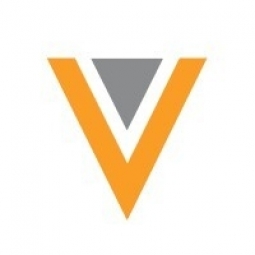技术
- 分析与建模 - 实时分析
- 无人机 - 无人机有效负载与配件
适用行业
- 教育
- 药品
适用功能
- 维护
- 质量保证
用例
- 基础设施检查
- 安全索赔评估
服务
- 测试与认证
- 培训
关于客户
Excelya 是一家泛欧洲合同研究组织 (CRO),为申办者提供个性化方法、高质量服务和强大的临床专业知识。该公司与客户合作,实现检查准备就绪,这是所有 CRO 的关键目标。 Excelya 的 eTMF 部门由 Petek Berker Birik 领导,与 Veeva 合作,确保申办者试验主文件 (TMF) 的实时检查准备就绪和进度完全透明。 Excelya 的客户包括在文档控制和检查准备方面面临重大挑战的新兴生物技术公司。
挑战
新兴生物技术公司在文件控制和检查准备方面面临着重大挑战。最关键的问题之一是构建和维护完整且准确的电子试验主文件 (eTMF)。如果没有这一点,公司可能会遇到市场审批的延迟。 FDA 提交的问题很常见,50% 最终出现关键数据一致性问题。药品和保健产品监管局 (MHRA) 和欧洲药品管理局 (EMA) 的常见质量调查结果包括数据不完整、不一致、不准确、重复、命名错误或归档错误。此外,向新的文档控制数字模型的转变对大多数公司来说都是一个陡峭的学习曲线。他们需要了解该技术的全部功能,然后要么雇用新员工来实施该技术,要么重新分配现有员工。
解决方案
Excelya 与 Veeva 合作,帮助客户部署 eTMF。这种合作关系使 Excelya 能够维护一个 eTMF 中心,该中心将专门的中央审查团队、训练有素的项目负责人、临床研究助理、Vault eTMF 专家和多个国家的“超级用户”连接起来。该中心的中心是 Vault eTMF,它在根据 eTMF KPI 设计的结构化监督计划下运行,并在 eTMF 部门经理的精心指导下运行。该模型在客户所需的技术和能够利用该技术实现检查准备的人员之间建立了和谐的关系。 Excelya 还通过提供经过验证的标准操作程序 (SOP) 和专业资源来补充赞助商团队,为没有适当人员或流程来监控和管理 eTMF 的赞助商客户弥补差距。
运营影响
数量效益

Case Study missing?
Start adding your own!
Register with your work email and create a new case study profile for your business.
相关案例.

Case Study
Case Study: Pfizer
Pfizer’s high-performance computing software and systems for worldwide research and development support large-scale data analysis, research projects, clinical analytics, and modeling. Pfizer’s computing services are used across the spectrum of research and development efforts, from the deep biological understanding of disease to the design of safe, efficacious therapeutic agents.

Case Study
Fusion Middleware Integration on Cloud for Pharma Major
Customer wanted a real-time, seamless, cloud based integration between the existing on premise and cloud based application using SOA technology on Oracle Fusion Middleware Platform, a Contingent Worker Solution to collect, track, manage and report information for on-boarding, maintenance and off-boarding of contingent workers using a streamlined and Integrated business process, and streamlining of integration to the back-end systems and multiple SaaS applications.

Case Study
Process Control System Support
In many automated production facilities, changes are made to SIMATIC PCS 7 projects on a daily basis, with individual processes often optimised by multiple workers due to shift changes. Documentation is key here, as this keeps workers informed about why a change was made. Furthermore, SIMATIC PCS 7 installations are generally used in locations where documentation is required for audits and certification. The ability to track changes between two software projects is not only an invaluable aid during shift changes, but also when searching for errors or optimising a PCS 7 installation. Every change made to the system is labour-intensive and time-consuming. Moreover, there is also the risk that errors may occur. If a change is saved in the project, then the old version is lost unless a backup copy was created in advance. If no backup was created, it will no longer be possible to return to the previous state if and when programming errors occur. Each backup denotes a version used by the SIMATIC PCS 7 system to operate an installation. To correctly interpret a version, information is required on WHO changed WHAT, WHERE, WHEN and WHY: - Who created the version/who is responsible for the version? - Who released the version? - What was changed in the version i.e. in which block or module of the SIMATIC PCS 7 installation were the changes made? - When was the version created? Is this the latest version or is there a more recent version? - Why were the changes made to the version? If they are part of a regular maintenance cycle, then is the aim to fix an error or to improve production processes? - Is this particular version also the version currently being used in production? The fact that SIMATIC PCS 7 projects use extremely large quantities of data complicates the situation even further, and it can take a long time to load and save information as a result. Without a sustainable strategy for operating a SIMATIC PCS 7 installation, searching for the right software version can become extremely time-consuming and the installation may run inefficiently as a result.

Case Study
ELI LILLY ADOPTS MICROMEDIA’S ALERT NOTIFICATION SYSTEM
Pharmaceutical production is subject to a strict set of enforced rules that must be adhered to and compliance to these standards is critically necessary. Due to the efforts of WIN 911’s strategic partner Micromedia, Lilly was able to adopt an alarm notification infrastructure that integrated smoothly with their existing workflows and emergency hardware and protocols. These raw energy sources enable the industrial process to function: electricity, WIN-911 Software | 4020 South Industrial Drive, Suite 120 | Austin, TX 78744 USA industrial steam, iced water, air mixtures of varying quality. Refrigeration towers, boilers and wastewater are monitored by ALERT. Eli Lilly identified 15000 potential variables, but limitations compelled them to chisel the variable list down to 300. This allowed all major alarms to be covered including pressure, discharge, quantity of waste water discharged,temperature, carbon dioxide content, oxygen & sulphur content, and the water’s pH.









